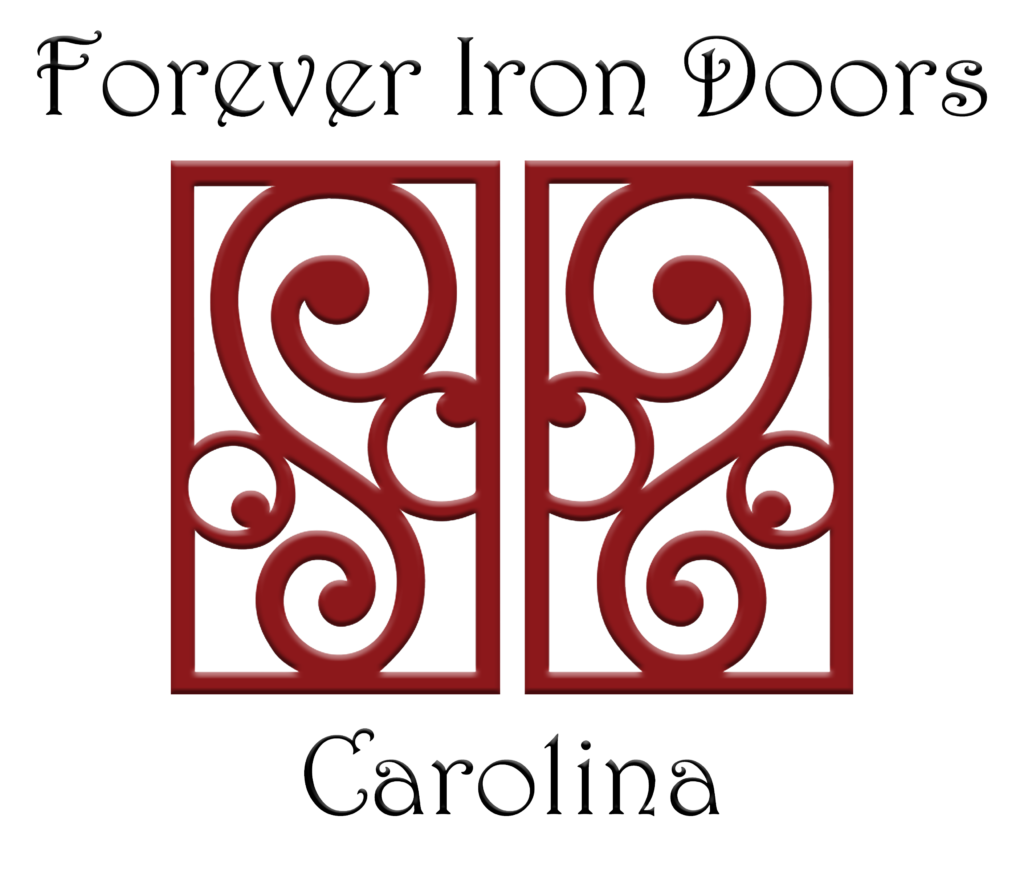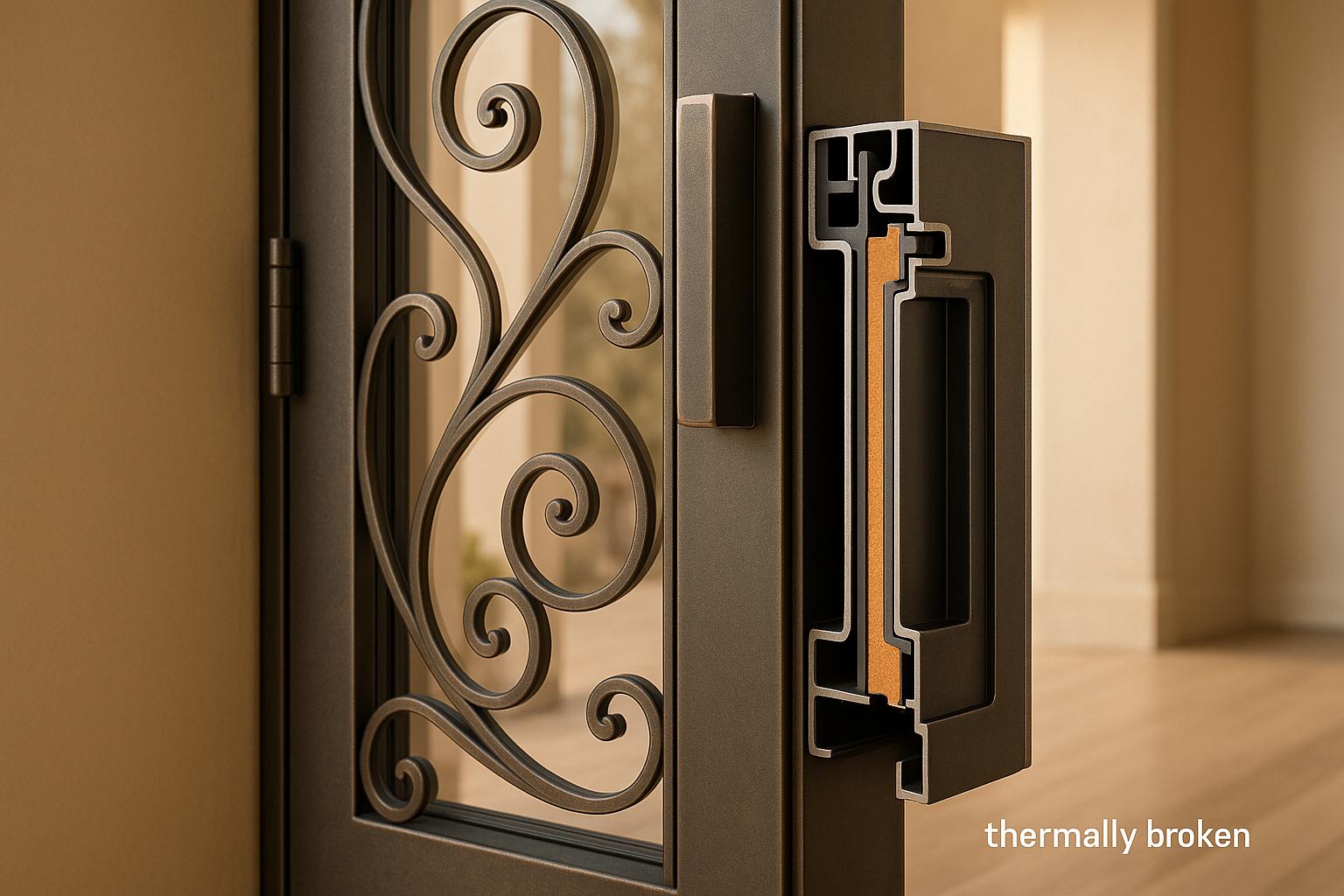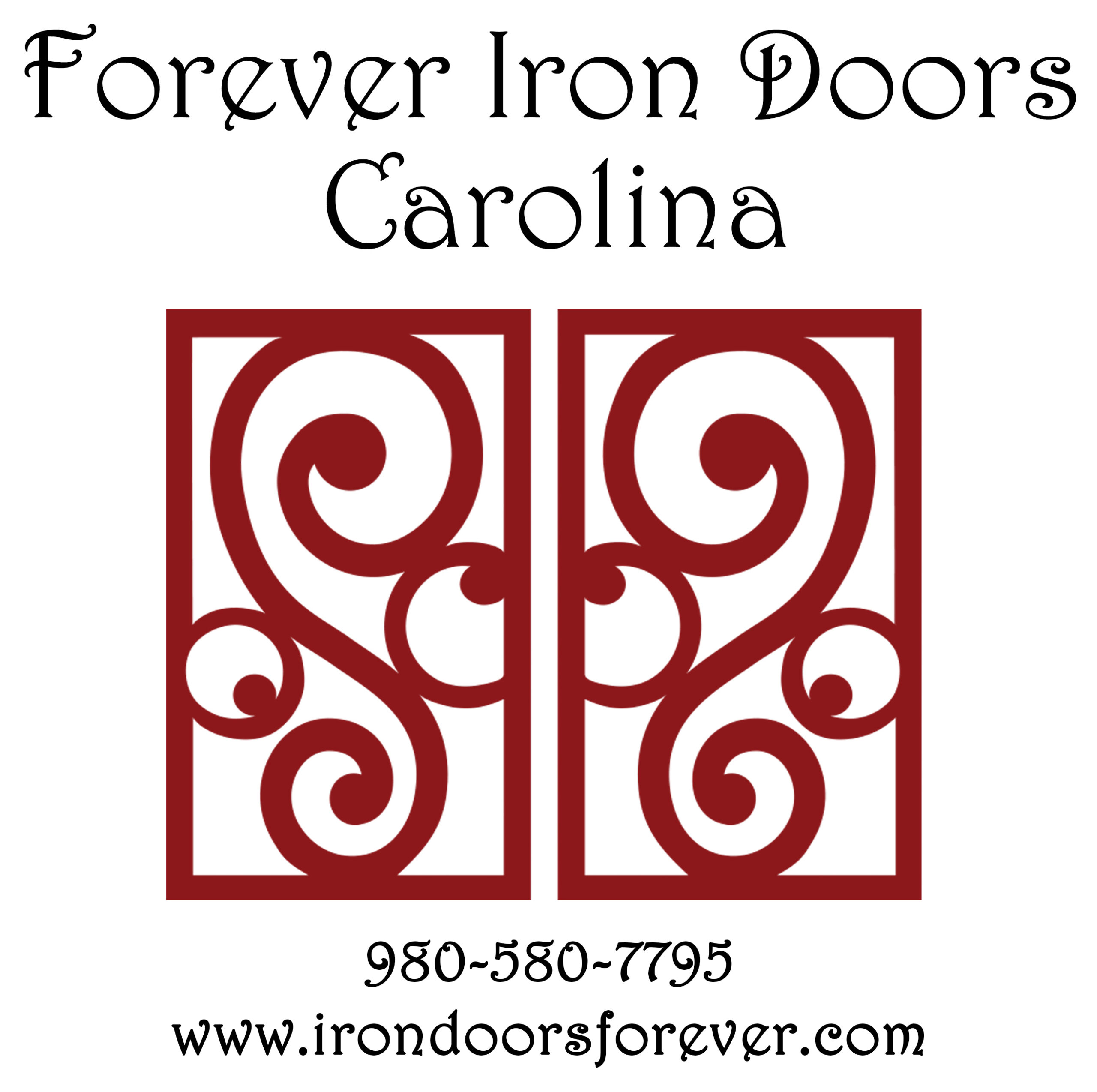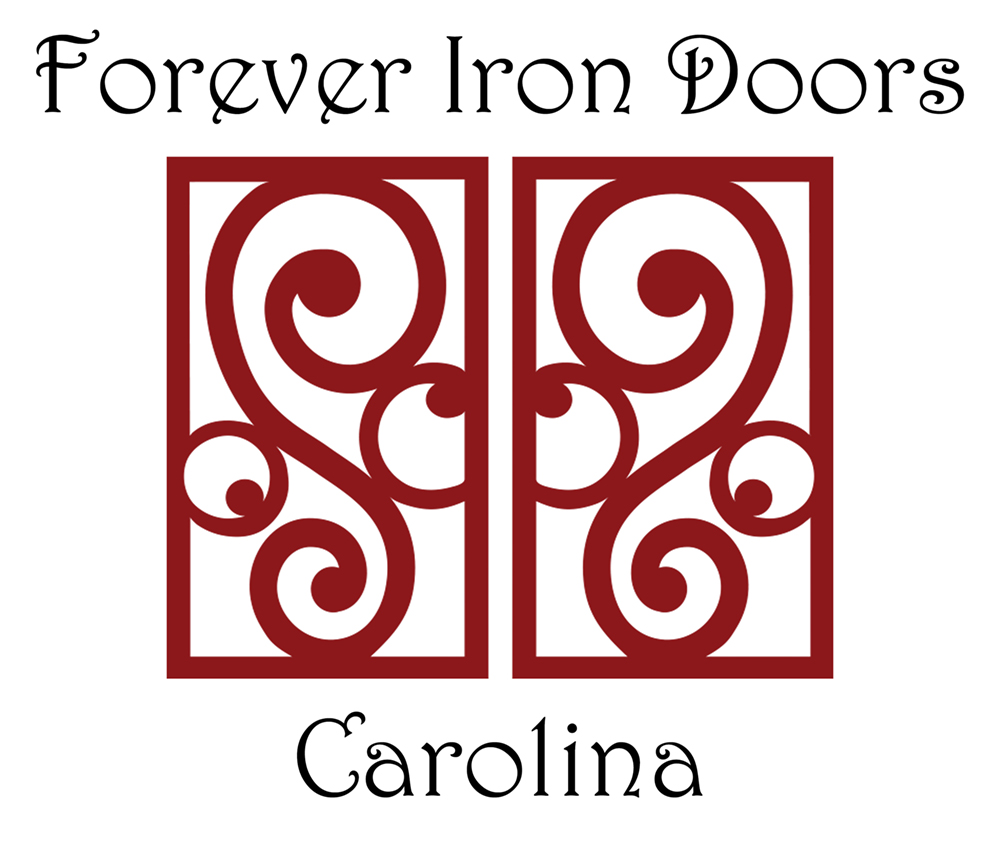Thermal breaks in wrought iron doors are insulating materials that reduce heat transfer through the metal frame. They act as a barrier between the interior and exterior layers of the door, improving energy efficiency and maintaining indoor comfort. Without them, wrought iron doors can cause energy loss due to thermal bridging, making it harder to regulate indoor temperatures.
Key Points:
- Why They Matter: Wrought iron conducts heat, leading to energy loss and discomfort. Thermal breaks block this heat transfer.
- How They Work: Insulating materials, like engineered polymers, are embedded in the door frame to stop direct heat flow.
- Benefits: Lower energy bills, better indoor temperature control, reduced drafts, and longer door lifespan.
- When to Consider Them: Ideal for extreme climates or if you notice high energy bills, drafts, or temperature changes on the door frame.
Thermal breaks are a practical solution to make wrought iron doors more energy-efficient without sacrificing their durability or aesthetic appeal.
How Thermal Breaks Work in Wrought Iron Doors
Heat Transfer and Thermal Bridging Basics
To understand why thermal breaks are so effective in wrought iron doors, it’s essential to first grasp how heat moves through these doors. Wrought iron, while highly desirable for its durability and aesthetic appeal, is also an excellent conductor of heat. This property, though useful in some applications, can create challenges when it comes to maintaining comfortable indoor temperatures.
Without thermal breaks, wrought iron doors can transfer outdoor temperatures directly into your home through a phenomenon called thermal bridging. Think of it like a metal spoon heating up quickly when placed in a hot drink – it’s the same principle. This process allows heat or cold to pass through the metal frame of the door, making it a direct pathway for unwanted temperature changes.
The effects of thermal bridging can be significant. It forces your heating and cooling systems to work overtime, resulting in higher energy bills and less comfortable indoor spaces. In winter, you might notice frost forming on the inside of the door frame, while in summer, the metal surface can become uncomfortably hot to touch. Compared to materials like wood or fiberglass, which are less conductive, uninsulated wrought iron doors lose energy much more efficiently. This is where thermal breaks come into play, reducing energy loss and improving indoor comfort by breaking the heat transfer cycle.
Materials Used in Thermal Break Technology
Thermal break technology relies on specialized materials designed to block heat transfer. These materials, often engineered polymers with a polyurethane foam core, are embedded within the door frame. Known for their insulating properties and durability, these materials are capable of withstanding the structural demands of a door while effectively reducing heat flow.
By creating an insulating barrier, these materials force heat to take less efficient paths through the door structure, significantly limiting energy transfer. This insulation is built into the door during manufacturing, ensuring a seamless and consistent defense against temperature changes.
How Thermal Breaks Are Installed in Door Frames
The installation process for thermal breaks is designed to maximize their insulating potential. These breaks are incorporated during manufacturing, either as a standard feature or an optional upgrade. Precision is key, as the insulating material must be perfectly placed to ensure optimal performance.
The process involves inserting the low-conductivity material between the exterior (weather-facing) and interior (home-facing) sections of the door frame. This creates a physical barrier that separates the two sides, preventing direct heat transfer through the metal.
Additionally, thermal break systems are often paired with other energy-efficient features, like dual-pane or triple-pane tempered glass. These glass panes are typically filled with Argon gas and coated with Low-E (low-emissivity) treatments, further enhancing the door’s ability to regulate temperature.
When combined, these measures allow thermally broken wrought iron doors to achieve energy efficiency levels comparable to fiberglass or wood alternatives. This means you can enjoy the strength, security, and visual appeal of wrought iron doors without sacrificing thermal performance.
Benefits of Thermally Broken Wrought Iron Doors
Thermally broken wrought iron doors offer more than just a stylish appearance – they deliver practical advantages that go beyond energy efficiency.
Energy Efficiency and Cost Savings
By cutting down on heat transfer, these doors help lower the workload on your HVAC system, leading to noticeable energy savings. Over time, this can also reduce wear and tear on heating and cooling equipment, potentially extending its lifespan.
Improved Comfort and Climate Control
Say goodbye to drafts and uneven temperatures. Thermally broken doors keep your indoor environment consistent by eliminating hot spots and reducing moisture buildup. This not only creates a cozier living space but also lowers the chances of water damage and mold growth.
Added Perks: Durability and Noise Reduction
The benefits don’t stop there. These doors handle thermal stress better, which helps protect seals, hardware, and the overall structure. They also reduce outside noise, making your home quieter and more peaceful. In colder regions, the thermal barrier prevents ice from forming on the frame, ensuring smooth operation even when winter hits hard.
sbb-itb-cd90297
When to Consider Thermal Breaks for Your Wrought Iron Door
Thermal breaks can make a big difference in comfort and energy savings, but they’re not always necessary. It depends on your environment and the condition of your door. Here’s how to figure out if they’re right for you.
Climate and Location Factors
Your local climate plays a huge role in deciding whether thermal breaks are worth it. If you live in a region with extreme weather – freezing winters or scorching summers – thermal breaks can help by reducing heat transfer through the metal frame. They’re especially useful in areas where the temperature difference between indoors and outdoors is significant.
Think of thermal breaks as an extra layer of insulation, working alongside other energy-saving measures to keep your home comfortable year-round.
Signs Your Door Needs Thermal Breaks
Not sure if your door could benefit from thermal breaks? Look for these telltale signs:
- Skyrocketing energy bills: If your heating or cooling costs are unusually high during extreme weather, your door’s insulation might be part of the problem.
- Drafts around the frame: Feeling a breeze near a closed door could mean air is leaking through, often due to thermal bridging.
- Condensation or frost buildup: Moisture on the inside of the door frame, especially in winter, signals heat loss.
- Temperature changes on the frame: If the metal frame feels much hotter in summer or colder in winter than the rest of the door, heat transfer is likely happening.
These issues not only affect your comfort but also increase energy costs, making thermal breaks a practical solution.
Cost vs. Savings Analysis for Homeowners
While doors with thermal breaks might have a higher upfront cost, they can pay off in the long run. By reducing the strain on your HVAC system, they lower energy bills and even cut down on maintenance expenses. Plus, they help prevent thermal stress on the door’s components, which means fewer repairs and a longer lifespan for your door.
If you’re considering custom wrought iron doors with advanced thermal break technology, check out Forever Iron Doors Carolina – they offer options designed to combine style with energy efficiency.
Why Thermal Breaks Are Important for Wrought Iron Doors
Thermal breaks are a game-changer when it comes to improving the functionality of wrought iron doors. They tackle one of metal’s biggest drawbacks – its natural tendency to conduct heat – by adding an insulating barrier between the interior and exterior. This innovation is a standout feature of the custom solutions provided by Forever Iron Doors Carolina.
Key Benefits of Thermal Breaks
- Boost Energy Efficiency: By limiting heat transfer, thermal breaks help reduce the strain on your HVAC system, ultimately lowering energy bills.
- Prevent Hot and Cold Spots: Eliminating thermal bridging not only stabilizes indoor temperatures but also reduces condensation, creating a more comfortable and consistent entryway environment.
- Extend Door Lifespan: Reduced thermal stress means less wear and tear, fewer repairs, and longer-lasting hardware. Over time, the savings on maintenance can offset the initial investment in thermal break technology.
This technology is especially valuable in areas with extreme weather, where the temperature difference between inside and outside is most pronounced. But even in milder climates, the energy savings and added comfort make thermal breaks a smart choice.
Custom Wrought Iron Doors with Thermal Breaks
Custom wrought iron doors that incorporate thermal breaks strike the perfect balance between style and practicality. Forever Iron Doors Carolina excels at integrating this technology into their designs without sacrificing the visual appeal or durability that wrought iron doors are known for.
Their process covers every step, from design consultation to installation, ensuring thermal breaks are expertly placed and sealed for maximum performance. You can also customize your door with a variety of glass options, finishes, and hardware to match your home’s aesthetic while benefiting from energy-efficient features.
Whether you’re upgrading an existing entryway or designing for new construction, their expertise ensures you don’t have to compromise on either style or functionality. By blending traditional wrought iron craftsmanship with modern insulation technology, these doors are built to enhance your home for years to come.
FAQs
What makes thermal breaks in wrought iron doors energy-efficient compared to fiberglass or wood doors?
Wrought iron doors with thermal breaks are a smart choice for improving energy efficiency. These breaks work by placing a non-conductive material between the inner and outer metal sections of the door. This creates a barrier that reduces heat transfer, helping to keep indoor temperatures steady.
Thanks to this design, modern wrought iron doors can match the performance of fiberglass or wood doors, even in harsh weather. They combine the strength and timeless elegance of iron with better insulation, making it easier to stay comfortable indoors while potentially lowering energy bills.
Can thermal breaks be added to existing wrought iron doors, or do they need to be built in during manufacturing?
When it comes to wrought iron doors, thermal breaks are usually built in during manufacturing to improve energy efficiency. That said, it’s possible to add them to existing doors as an upgrade in certain situations. Since the process depends heavily on the design and structure of the door, it’s a good idea to consult a professional. They can assess whether retrofitting is an option and ensure the installation is done correctly.
How can I maintain wrought iron doors with thermal breaks to keep them durable and energy-efficient?
To keep your wrought iron doors with thermal breaks in great shape and ensure they stay energy-efficient, regular cleaning is key. Use a mild soap mixed with water or a non-abrasive cleaner to get rid of dirt and grime. This simple step also helps prevent rust from developing.
Twice a year, apply a protective wax or sealant to safeguard the door’s finish and provide extra protection against corrosion. On top of that, check your doors every three months for any signs of rust, damage, or wear. Tackling these issues early ensures the thermal break continues to do its job – minimizing heat transfer – so your doors remain energy-efficient and last longer.



